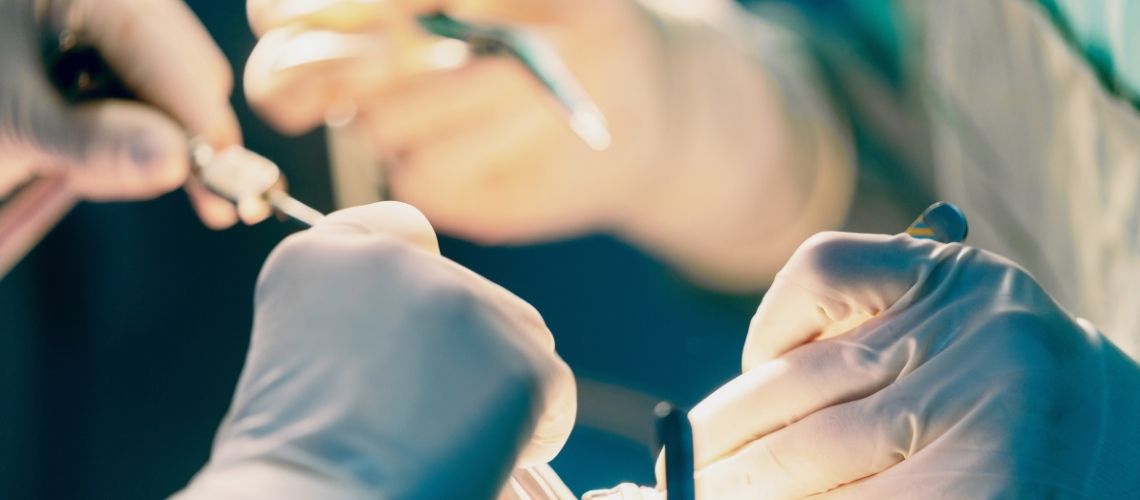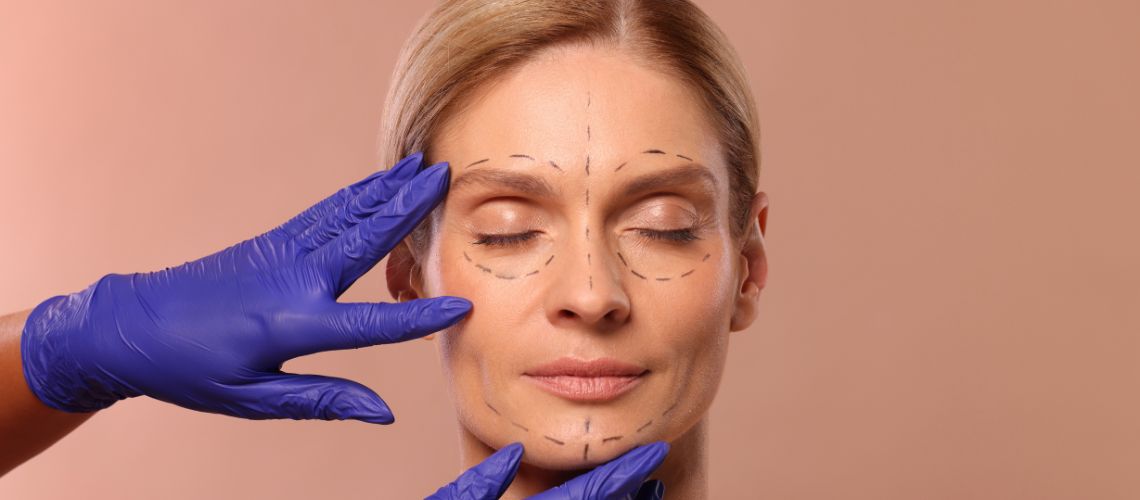A facelift and rhinoplasty can be performed together to achieve comprehensive facial rejuvenation. While rhinoplasty refines nasal aesthetics, a facelift addresses sagging skin and deep wrinkles.
Combining the two surgeries allows patients to undergo a single anesthesia and recovery period, making the process more efficient and convenient.
The procedures must be carefully planned to balance nasal correction with overall facial lifting. Coordination ensures proportional, natural-looking results without exaggeration.
Choosing a surgeon experienced in both techniques is crucial. Properly executed, the combination creates long-lasting rejuvenation and harmonious facial features.
İçindekiler
What are the main upsides to combining Facelift and Rhinoplasty?
Combining these surgeries has some great advantages. A major one is obtaining a more even and realistic facial appearance. When a surgeon operates on both your nose and face at the same time, they can ensure everything matches perfectly. The face ages as a unit, so treating parts together gives a more complete and natural rejuvenation effect.
Another major plus is having just one recovery period. It takes time to heal, so we do multiple surgeries to avoid that downtime. This is especially helpful if you have a busy schedule.
You might also see some cost savings. You pay for the operating room and anesthesia once, not twice.
Is there a special surgical advantage when combining Facelift and Rhinoplasty?
Certainly, there could be a clean surgical benefit relating to cartilage. For rhinoplasty, the surgeon may require extra cartilage, particularly if it is a complex reshaping or a revision. The nose receives grafts in the shape of cartilages to provide support or definition.
Your surgeon can usually use a little piece of cartilage from your ear, if you are having a facelift at the same time. The existing facelift incision that’s normally hidden behind the ear deftly accomplishes this. This means no extra cut is needed elsewhere on your body.
What general surgical risks should I know about for combined Facelift and Rhinoplasty?
Any surgery has some general risks. Bleeding, infection, or allergic reaction to the anesthesia are possible risks of having a surgery. Combining facelift and rhinoplasty together will naturally take more time and involve a larger area of your body. At times, it can raise the usual surgical risks slightly.
For instance, one may experience bleeding or collection of blood beneath the skin, i.e. hematoma. Surgeons use very careful techniques to keep this risk low. The chance of an infection might also be a bit higher. Your surgeon will discuss all these possibilities with you.
Are there specific risks for the Facelift part in a combined Facelift and Rhinoplasty?
The facelift procedure itself does carry some specific risks. One concern is potential injury to nerves in the face. These might affect the way you feel or how your face works – but only for a while. Rarely, a person’s facial expression might end up being slightly different afterwards.
You may experience hair loss around the incision sites; however, these are typically placed in areas that will be hidden. Uneven skin healing might take place which on rare occasions might cause skin loss mainly for smokers. Fluid might also collect under the skin. Your surgeon will use techniques to reduce these risks and guide your aftercare.
Are there specific risks for the Rhinoplasty part in a combined Facelift and Rhinoplasty?
The nose-reshaping part of the rhinoplasty also has its own specific risks. Following surgery, some people may suffer from continuing nasal airway obstruction or other breathing difficulties. It is possible to experience some permanent numbness in or around the nose, as well as some degree of asymmetry or aesthetic outcome less than hoped for.
Persistent pain, discoloration, or swelling can also occur. The swelling resulting from the rhinoplasty is monitored closely in combination procedures, as it can migrate towards the mid-face. Serious complications could be a hole in the septum and skin issues though rare.
Do risks get worse when you combine Facelift and Rhinoplasty?
It’s necessary to know that having facelift and rhinoplasty combined puts more stress on your body than just one, because the surgery is longer and more extensive. The possible complications with drug combinations may increase rather than just add up from the individual risks.
A longer surgery may cause an increased risk of complications like infections and blood clots. This is what draws concern here. Although you have just one recovery phase, the first stage may be tougher, as your body is healing in two surgical areas at the same time. An experienced surgeon is vital to manage these factors.
Who is usually a good candidate for a combined Facelift and Rhinoplasty?
As a rule, a good candidate for a combined facelift and rhinoplasty is someone who is in good health. It is important because the combined surgery is longer and requires more anesthesia than a single procedure. Your health issues should not be serious or out of control.
Being a non-smoker is also very important. Smoking makes it harder to heal and more likely to get complications. You will be advised to stop smoking before and after the surgery by your surgeon.
Having realistic expectations is key. It is important to know what a combined surgery can achieve, what it cannot do and how recovery will be.
What makes someone an ideal fit for concurrent Facelift and Rhinoplasty beyond health?
An ideal candidate for a simultaneous facelift and rhinoplasty, beyond being in good physical health and not smoking, often has aesthetic concerns where treatment of both areas is well indicated. Many people may feel that their nose is out of sync with their facial features because of age. Other times, a person may just want a more satisfactory nose shape that would improve their overall youthful appearance.
Having a firm commitment to the recovery process is important as well. You should be prepared for an initial healing phase that might feel a lot tougher than recovering from just one surgery. Good psychological stability is also vital.
When would a combined Facelift and Rhinoplasty not be advisable?
At times, it is not the appropriate choice to have a facelift and rhinoplasty. Many underlying health issues pose too much risk for a long, elective surgery, experts say.
There’s another strong reason to avoid or delay combined procedures, and that is active smoking, which impairs healing badly. Patients with unrealistic expectations or certain physical or mental disorders, such as BDD, are unsuitable for combined surgery.
When the planned facelift and rhinoplasty involve exceptional complexity and would result in excessive surgical time (six hours or more) it is best to carry them out separately.
How do surgeons approach a simultaneous Facelift and Rhinoplasty differently?
When performing a facelift and rhinoplasty together, surgeons don’t have to modify how the procedures are done alone. The key adaptation is to coordinate carefully between the two instead.
A comprehensive surgical plan is essential. The steps to be taken for the augmentation facelift and rhinoplasty will be covered in this plan. The surgeon also chooses the most efficient order for the procedures. A main consideration is how swelling might affect one another from one area. It is even more crucial to limit overall inflammation with gentle tissue handling.
What kind of anesthesia is typically used for a combined Facelift and Rhinoplasty?
A facelift and rhinoplasty can take a long time, so general anesthesia is usually preferred for the procedure. As a result of general anesthesia, you won’t feel a thing and will be completely asleep throughout the procedure. It helps you notice if you are not perfectly still, your muscles are tense, and your breathing is controlled.
Total Intravenous Anesthesia (TIVA) is a popular method among many facial plastic surgeons and anesthesiologists. With TIVA, anesthetic agents are administered through the vein (IV). Opioids, like morphine, are also used for pain relief. They help people recover smoothly from surgery. This technique may smooth your waking process as well as reduce your chances of feeling nauseous afterwards.
How are anesthesia risks managed during a longer Facelift and Rhinoplasty?
The anesthesia team makes efforts to manage risks during surgery when the duration is longer. If they can help it, they usually try to keep the total surgical time to about five or six hours.
To reduce blood loss during surgery, anaesthesiologists use techniques for controlled hypotension, which keep your blood pressure carefully low. It is also important to prevent nausea and vomiting after surgery, so patients often receive medications for nausea.
Doctors usually use special compression devices to stop blood clots in the legs. Ensuring safe and faster recovery, we are careful about IV fluids and we keep you warm.
What’s the healing process like after a combined Facelift and Rhinoplasty?
Following an operation for facelift and rhinoplasty, you will have a single healing. The most swelling and bruising will be in the first one to two weeks. Your cheeks, jawline, neck, nose and under-eye areas will be affected through this. For the first week after nose surgery, you will wear a nose splint.
It is usual for discomfort and pain to occur and may be taken care of with medication prescribed. Rest is vital in this early phase. Keeping your head elevated whilst sleeping can help reduce the swelling. Around 10 to 14 days after surgery, most people feel “socially presentable”.
How does recovery from combined Facelift and Rhinoplasty compare to doing them separately?
After a combined facelift and rhinoplasty, you only have to go through one recovery. Patients prefer the double jaw surgery as they will not have to go through a downtime of recovery.
Although there is a considerable benefit to a single recovery time, it can be more difficult initially than after one procedure. The body is healing at multiple surgical sites. Nonetheless, the total calendar time spent in recovery is far less than the sum of two separate recoveries.
What results can people expect from a combined Facelift and Rhinoplasty?
The objective of facelift and rhinoplasty is to achieve a harmonious, younger-looking face that appears natural. The facelift lifts and tightens the lower part of your face and your neck. The rhinoplasty will reshape your nose to match your new look.
When performed by an experienced surgeon, the results should be natural, harmonious and refreshed looking but not “operated”. They are usually very satisfied with the outcome provided their expectations are realistic. It may take several months for all the swelling to resolve. Nose swelling may continue to refine for up to a year or more.
Is it cheaper to have Facelift and Rhinoplasty together or separately?
Getting a facelift and a nose job (rhinoplasty) can be done together whenever possible. Generally, this combination of cosmetic procedures is more cost-effective. The main reason is that some important fees like the operating room and anesthesia fees are billed only once.
Although your surgeon will still charge fees for each procedure, you can save a considerable amount of money on these shared ancillary fees. However, do keep in mind that the payment you will need to make upfront for the combined surgery will be higher than that for either procedure.
Why is choosing a skilled surgeon so vital for Facelift and Rhinoplasty?
It is utterly important to choose a highly skilled and experienced surgeon for a facelift and rhinoplasty. Both are complex procedures individually. Combining them increases the complexity.
It takes experience for a surgeon to perform successful surgery, but art is needed to do it successfully to integrate it with what is already there seamlessly. They need to ensure a balanced natural and attractive result while being safe. An experienced surgeon can better anticipate and deal with complications as they arise. Seek evidence of board certification and excellent track record with both procedures.
What do medical groups advise regarding combined Facelift and Rhinoplasty?
Leading medical organizations do not provide concrete recommendations for each specific combination of procedures. Instead, they set forth broader principles that always apply to any procedure, including combination facelift and rhinoplasty.
Their primary emphasis is always on patient safety. It’s only when we operate a qualified, board-certified surgeon in an accredited facility. It is also important that the patient is carefully evaluated for their health, motivation, and realistic expectations. It is necessary that all aspects are discussed before giving consent. Total surgery length is a consideration for the surgeons.
What do expert surgeons think about performing Facelift and Rhinoplasty together?
Combining facelift with rhinoplasty, say expert facial plastic surgeons, can be an effective option for the right candidates. This is because the procedures can target the nose and face simultaneously, causing more harmonious and natural results, they often say.
People often speak about practical advantages, including one recovery period and savings on costs. However, these experts still say that combining the surgeries is complicated. The key to success lies in careful patient selection of good health and realistic goals, in conjunction with precision of surgical technique.
In the end, choosing a facelift and rhinoplasty together is a huge step. It provides a means to achieve complete harmony of the face with no more than one recovery. For the right individual, with a highly skilled and experienced board certified facial plastic surgeon, it can be a safe and effective way to reach your aesthetic goals. For you to see whether the strategy is suitable for you, a thorough consultation is essential.

Prof. Dr. Murat Songu – Rhinoplasty (Nose Aesthetics) Specialist
Prof. Dr. Murat Songu was born in 1976 in Izmir and completed his medical education at the Ege University Faculty of Medicine. He then completed his residency training in the Department of Otorhinolaryngology at Celal Bayar University. Between 2005 and 2006, he received advanced training in rhinoplasty, functional nasal surgery, and skull base surgery in Bordeaux, France, working with leading rhinologists such as Prof. Vincent Darrouzet and Dr. Guy Lacher.
Prioritizing natural appearance, the preservation of breathing function, and facial aesthetic harmony, Prof. Dr. Songu is nationally and internationally recognized for his expertise in open rhinoplasty, piezo (ultrasonic) rhinoplasty, revision rhinoplasty, tipplasty, and functional septorhinoplasty. He has participated as an instructor and speaker at numerous rhinoplasty congresses worldwide.
With over 100 scientific publications, book chapters, and more than 1700 citations, Prof. Dr. Murat Songu is one of Türkiye’s most respected academics in the field of rhinoplasty, combining natural, facially harmonious, and functional results with scientific and aesthetic excellence.









